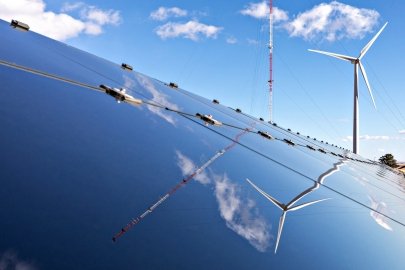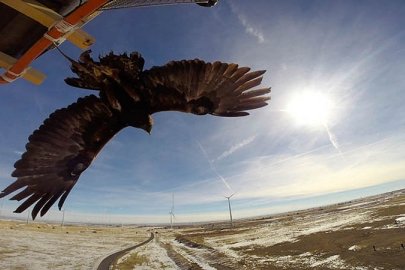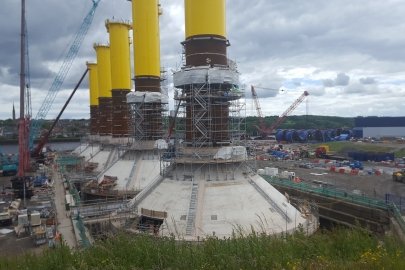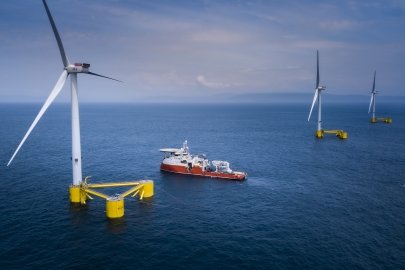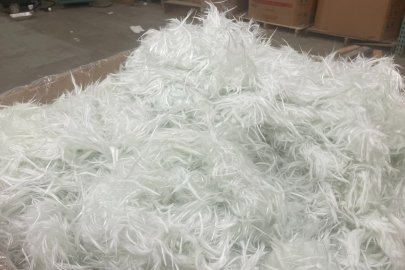In a collaborative study published in Wind Energy Science, a team led by Pacific Northwest National Laboratory examined offshore wind energy challenges and laid out future approaches to meet them.
Wind Energy Technologies Office
October 17, 2022A multi-institutional team identifies scientific challenges and modeling gaps for offshore wind development
Harnessing wind off the nation’s coasts is still in its infancy. Wind energy developers must understand the complexities of the ocean environment before they fund in technologies. These complexities include how much the wind blows and in what directions; how wind flows in and around wind energy plants; and how the atmosphere and ocean interact with offshore wind turbines.
Atmospheric wind energy models have helped scientists make great strides in understanding the intricacies of offshore wind, but many knowledge gaps remain.
Now, a multi-institutional team of wind energy experts led by Pacific Northwest National Laboratory (PNNL) has outlined the scientific “grand challenges” for evaluating offshore wind resources and identified gaps in models, data sets, and model validation—the process of confirming that a model actually achieves its purpose. Addressing these gaps could lead to more offshore wind development and deployment off the nation’s coasts.
The team’s findings, with support from the U.S. Department of Energy’s (DOE) Wind Energy Technologies Office, were published in Wind Energy Science.

A team of wind energy experts outlined the scientific “grand challenges” for evaluating offshore wind resources and identified gaps in models and model validation—an effort that will help further offshore wind energy development and deployment off the nation’s coasts.
The team identified three challenges related to modeling offshore wind energy that are intertwined and must be addressed:
- Scientists must consider of all the various time and spatial scales when simulating interactions among winds and waves and how they, in turn, interact with turbines.
- Observations—or data collected in the field—to validate wind energy models is severely limited, (although DOE-funded Wind Forecast Improvement Project 3 plans to address this challenge by collecting more on-site data within a wind energy lease area along the nation’s East Coast).
- Better understanding is needed of harsh ocean environments in and around wind power plants.
Findings and Closing the Gaps
The team outlined several findings and recommendations for addressing these challenges.
There are no substitutions for observations in the real atmosphere. Observations must span a large set of conditions, ranging from sea breezes to large-scale storms, to successfully apply them to models. This is especially true for the atmospheric boundary layer—the layer of atmosphere that “feels” the presence of the ocean—where making measurements is challenging due to very few physical seaworthy wind measurement platforms available.
Model validation spanning many time and space scales is most effective when coupled with observation sets that span those same scales. The research team proposed large-scale offshore wind field studies spread across seasons, noting that while costly, the return on funding would likely be significant. The data from these field studies may include measurements of the winds, waves, and currents, along with temperature in the atmosphere and ocean that will can be used to evaluate models, provide new physical insights into key atmosphere and ocean properties, and inform design standards for offshore wind turbines.
They also suggested incorporating machine learning capabilities to help digest the vast amount of data associated with large field studies and to help improve the understanding of key processes governing atmospheric flow.
Long-term deployments at sea could use wind measurements similar to those common over land. This includes use of wind profilers, which take measurements of wind speed and directions at increasing altitudes in the atmosphere and provide measurements of wind speed, direction, and turbulence over much of the atmospheric boundary layer. The team also recommended that temperature and humidity profilers be used to measure through the depth of the atmospheric boundary layer—extending from approximately 100 meters to 1 kilometer over the ocean—which would facilitate more robust offshore wind and wave forecasts.
Data assimilation methods and atmospheric wind energy models require improvements. New data assimilation methods could be developed to better use existing observations for short- and medium-range weather predictions. Models are especially important, as they are used by the National Weather Service and often serve as foundational forecasts used by the energy community to integrate wind power into the grid.
The Breeze of Benefits
The team’s observations and recommendations could lead to more accurate wind energy resource assessments, which will help support funding decisions, such as determining the optimal arrangement of wind turbines within a wind plant, by developers and operators. Additionally, after construction of a site, more accurate wind forecasts will support integration of wind power with the grid.
Finally, wind turbine designers and developers need accurate data on atmospheric characteristics such as precipitation, waves, and currents, in order to account for their erosion and degradation to turbines, substructures, and foundations.
The team’s study built off findings from a 2019 DOE workshop that gathered U.S. and European wind energy experts from the national laboratories, academia, and industry to identify the most significant gaps in meteorological and oceanographic knowledge for developing offshore wind energy. In addition to PNNL, the team included experts from other DOE national laboratories and government agencies.
This article is part of a series being published in Wind Energy Science describing the critical research needed to meet wind energy’s “Grand Challenges,” initially introduced in a 2019 Science article outlining the progress, potential, and high-level scientific gaps in wind energy. The series, written by wind energy researchers worldwide, reviews the breadth of wind energy research needs and proposes actions to help reach global energy goals.
Subscribe to the WETO e-newsletter to stay informed on the latest wind energy news, events, publications, and updates.


